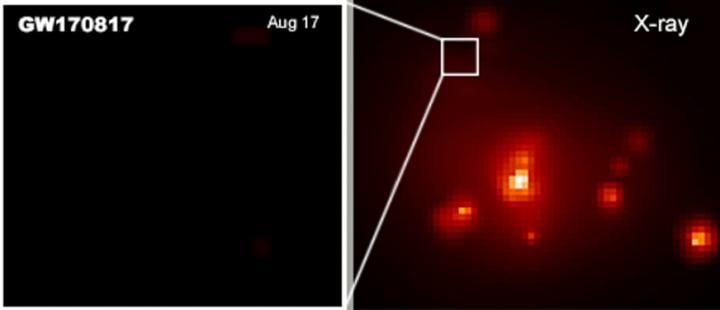It's been over a thousand days since the historic kilonova observation, and yet the region continues to emit X-rays, long after models predicted they should have faded away. What's going on?
August 2017 was a pretty momentous month in astronomy. The gravitational wave detectors LIGO and VIRGO spotted the unique signature of two colliding neutron stars, naming the event GW170817. Moments later, the orbiting satellite Fermi LAT witnessed a tremendous burst of gamma rays from the same region on the sky. Within hours, telescopes around the world focused on the source, watching a cosmic cataclysm unfold throughout the electromagnetic spectrum.
It was the first time that the same event (this particular one dubbed a "kilonova" because it's roughly a thousand times brighter than a nova) was observed with both traditional and gravitational astronomy. The combined observations confirmed what astronomers had long suspected: that when neutron stars merge, they go out with a bang.
Besides the original flash of the merger itself, the vicinity of the blast continued to glow for some time, powered by a beam of radiation unleashed during the collision plowing through the surrounding gas and dust.
Models of such collisions predicted that the high-energy afterglow should have faded after one or two hundred days. Once the collision ended, there should be nothing left to power the emissions long-term.
But here we are, three years later, and the region around GW170817 continues to pour out X-rays, as recently reported in the Monthly Notices of the Royal Astronomical Society.
What's causing all this copious X-ray emission? The kilonova itself is long gone, but something must still be providing a source of energy. Perhaps there is a shockwave moving through a denser region of gas. Perhaps there is still a remnant leftover from the collision. Perhaps it's something else entirely.
Whatever the case, the new observations are forcing astronomers to update their models of how kilonova work, and revealing the true richness of cosmic explosions.
 Universe Today
Universe Today

